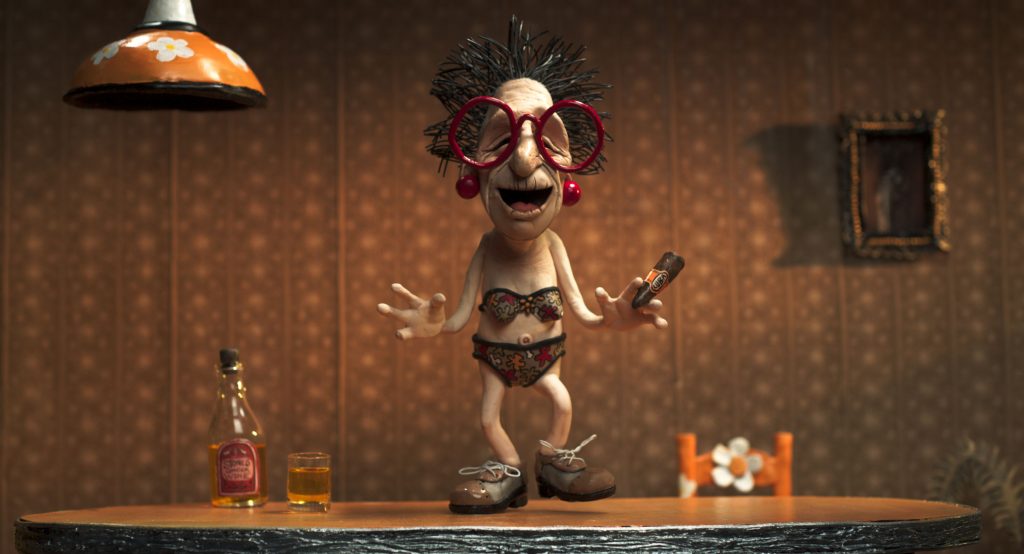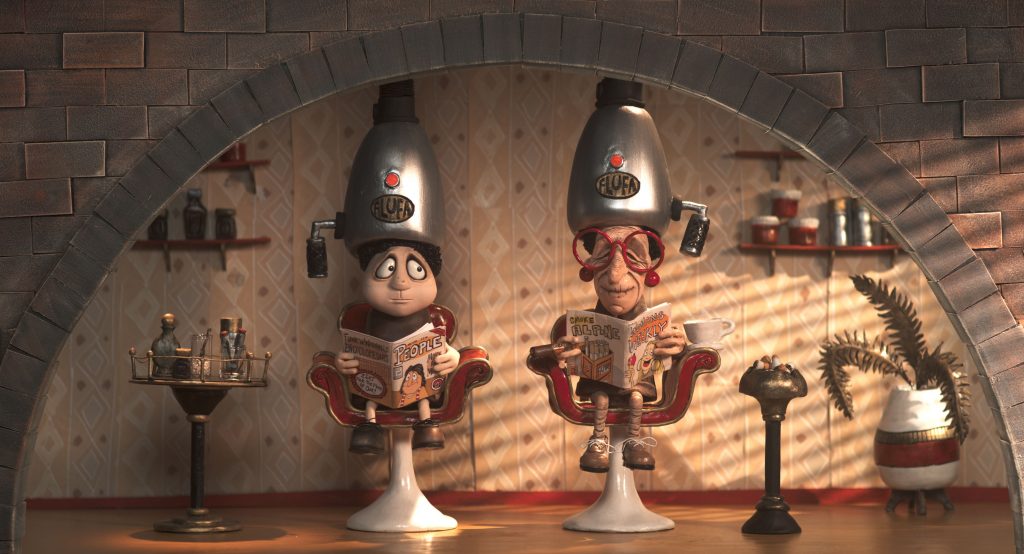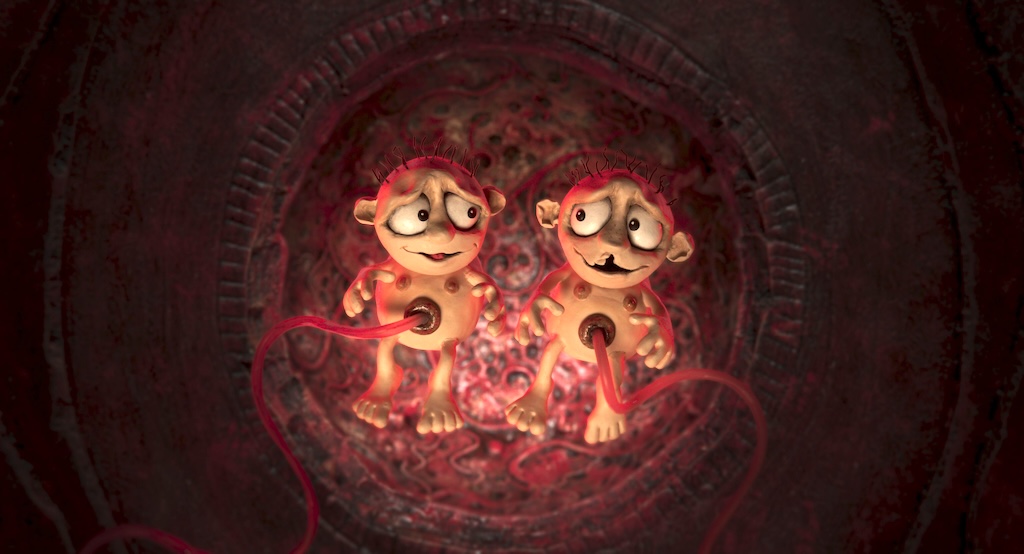Australian clay animator Adam Elliot has made a decades-long career of molding whimsical deeply-personal films such as Brother, Uncle, Mary Max, and Harvey Crumpet using traditional in-camera techniques – a far cry from quantum-powered CGI. Every frame is composed in a physical miniature set. Adam’s latest offering is his feature length Memoir Of A Snail which tells the story of twins Grace and Herbert Pudel who are separated after becoming orphans. No snails were hurt during the making of this film.
Elliot discusses his particular brand of “clayography” filmmaking with Creative Screenwriting Magazine.
Although every one of Elliot’s stories illuminates some pure human truth, he isn’t afraid to stray from it to boost the story. He quotes the often-told story of the size of the fish that someone caught that keeps getting bigger with each retelling. At some point, someone caught a fish and that’s all that matters. “You never let the truth get in the way of the story,” quips Elliot.
“It’s going to be more enjoyable for the audience, more poignant, if it has a resonance. I just let the writing unravel and take me where I think it needs to get to for it to be potent and visceral. You have that moment of absolute truth that feels incredibly truthful and real,” he elaborates of his writing process.
Elliot quotes Danish philosopher Søren Kierkegaard as the mantra that informs most of his work, “Life can only be understood backwards because we have to live it forwards.” Adam accepts that this is far too simplistic a view of life, but it has become more profound and meaningful to him as he matures. He suffered low self-esteem, imposter syndrome, and wasted too much time during his younger years. Does any of this matter now? Maybe. Maybe not.

Grace (Sarah Snook) & Adam Elliot
Why Claymation?
Adam Elliot thoroughly enjoys his low-tech, old school, shot on 16mm Bolex style of filmmaking. “We’re not limited by actors, locations, or the weather. We get to play god and we get to have total creative control and total creative freedom.” Adam also has final cut on all his films which he finds most liberating.
“I love using my hands. I love clay. I find kneading clay very therapeutic and primeval. I love to draw every day. Drawing is my yoga. It’s my meditation. I love the art form because of its tactile tangible.”
Telling Australian Stories
As an Australian, the land downunder heavily informs the animator’s stories. “I became friends with Aussie greats such as Barry Humphries, Clive James, Germaine Greer, and Robert Hughes, who all abandoned Australia, but at the same time still had a love for it.” Arguably the country has evolved over the years as has its sophisticated story palette.
“My love for Australia has grown in the same way Australia has grown. We have a richer culture, we’re not as narrow minded, we’re more multicultural. At times I feel like we’re going backwards, but I love iconography. I love to represent things about Australia that people forget, or are really not so obvious, particularly to international audiences who love and see Australia as an exotic country.” He opposes the use of the term “quirky” to describe the motherland. He prefers the term “eccentric.”

Pinky (Jacki Weaver) Photo courtesy of Arena Media/ IFC Films
In many respects, the filmmaker tells stories about what he knows and experienced. “I don’t have a choice. You’ve got to tell stories about yourself to be universal. You’ve got to look inwards, be introspective, and tell the personal. Hopefully that will radiate out and resonate with people across the world.” Elliot is amazed at how well-understood his idiosyncratic stories are globally.
Why Snails?
The early drafts of the screenplay were titled Memoir Of A Ladybird, but Elliot found it too saccharine and twee. Adam Elliot finally settled on snails because they added both a metaphorical and literal slant to his story. He was fascinated by them as a teen.
“You’re not meant to touch a snail’s antennas, but when you do, they quickly retract into their shell. I thought that’s what Grace (Sarah Snook) is doing. She constantly retreats from any more pain or trauma, and her snail hoard becomes a shield, a buffer or shell that she thinks is protecting her from the world, but really is her self-imposed cage.” A cage that prohibits her from enjoying life.
The animator believes animals with shells such as snails and molluscs are “introverts.” He likes the swirling of the snail shell which he considers a motif of life going a full circle. Elliot also discovered that snails can only move forward – even if it’s in circles. This sentiment ties into the thematic underpinning of much of his work.
Elliot also likens a crushed snail shell to a Japanese Kintsugi bowl that’s glued back together, but will never look perfect. This is just like Grace who is a broken and damaged person who’s put herself back together. It’s about celebrating one’s imperfections.
“A lot of my protagonists are flawed somehow, whether it is physical or mental. We’ve got to embrace these cracks. We all have and learn to live with them, love them, and embrace other peoples cracks as well,” he muses. The cracks let the light in.

Grace (Sarah Snook) & Punky (Jacki Weaver) Photo courtesy of Arena Media/ IFC Films
Striking A Bittersweet Tone
Memoir Of A Snail teeters on the edges of both tear-filled tragedy and tear-filled comedy. The characters are acutely aware as they navigate the tragicomic nature of life. Adam Elliot isn’t fussed by this whipsaw of emotions, so long as they’re authentic.
“As writers, it’s our job to push the boundaries and take risks. If an art form doesn’t take risks it becomes formulaic, stale, and then it dies. That’s why we need writers to remind us of how ridiculous and absurd things are. At times, I do worry maybe I’m pushing it too far because it’s becoming contrived or forced. But I think if you’re having those visceral reactions then it’s good. The last thing any of us one is apathy or indifference.”
“Without the dark the light has no meaning. I certainly want my audiences to be an emotional wreck by the end of the film, but I don’t want to depress them. I want them leaving the cinema uplifted and nourished.” That’s why Gilbert (Mason Litsos) came back in the end.
Finding Creative Inspiration
Adam Elliot declares that the simplest way to discover a good story is for it to tickle his fancy. He’s an avid collector (bordering on hoarder) and his journals go back three decades. He concedes that most of them are rubbish, but he still trawls through them. He affectionately refers to them as his “recipe books” where he “gets his ingredients.”
He quotes an example of an entry of men with leaf blowers. “You wonder if they are they doing it for a cathartic reason or for pleasure.” Other spurious images that “tickle his fancy” include watching guinea pigs mating or reading about “funny deaths in the Darwin Awards.” Each to their own.
As Elliot ages, his thoughts become more existentialist as he meditates on the lighter side of death. That’s why he loves black comedies which push the boundaries of cinema.
If the vagaries of life don’t provide sufficient inspiration, he can always rewatch one his favorite films Delicatessen by Marc Caro and Jean-Pierre Jeunet.
